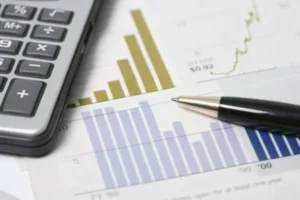Content

By putting these steps into practice, it will help you avoid accounting errors, identify new cash flow opportunities and promote financial success within your company. Managing your business checking accounts can make creating a balance sheet much easier. Speak with a business banker to see what other options are available for you. One way to gain a better understanding of your business’s finances, is to organize them in a way that lets you quickly scan all of your business assets, liabilities and equity.
- This document helps to ensure potential buyers that the company’s in good health — and gives them a comprehensive breakdown of all assets, liabilities, and equity in the business.
- A balance sheet is meant to depict the total assets, liabilities, and shareholders’ equity of a company on a specific date, typically referred to as the reporting date.
- More liquid items like cash and accounts receivable go first, whereas illiquid assets like inventory will go last.
- Some business owners like to run a monthly balance sheet as a kind of early-warning system about whether a course correction is needed.
- Review the above balance sheet example from Apple, Inc., to understand how to read a balance sheet.
- These include accounts payable, short-term notes payable, and accrued liabilities.
No matter which path you take, it’s important to understand how a balance sheet works as well as the basic steps to prepare it. Explore how a well-organized balance sheet can help your business avoid accounting errors, uncover new cash flow opportunities and achieve greater financial success. Knowing how to create and read a company’s balance sheet is essential to understanding the state of a business.
Step 2: List all of your assets
Thinking about hiring an accounting firm for help preparing your balance sheet? Browse our list of top accounting firms and learn more about their services in Capterra’s hiring guide. Once you have the assets and liabilities sections ready and sorted, arrange them in proper order. Assets should be arranged in the order of liquidity and liabilities in the order of discharge ability. Noncurrent liabilities are obligations that will take more than the next 12 months to be repaid.
- Owner’s equity relates to businesses that are sole proprietorships, and stockholders’ equity refers to corporations.
- These changes can include investing profits back into the company, reallocating assets, and changing inventory levels.
- It also has pre-set items for current assets, fixed assets, current liabilities, and long-term liabilities so, you won’t have to add them in yourself.
Building a balance sheet is an important practice that must be conducted on either a quarterly or monthly basis. This financial statement provides insight into your company’s financial health by detailing your assets, liabilities, and shareholders’ equity. It shows your current liabilities subtracted from your current assets to provide an accurate look at the worth of your business. In other words, the income statement shows you what happened
during the period between balance sheets. The liabilities are again divided into current and long-term liabilities.
Step 4: Determine current liabilities
Current liabilities are due within one year and are listed in order of their due date. Long-term liabilities, on the other hand, are due at any point after one year. The balance sheet provides an overview of the state of a company’s finances at a moment in time.
Example liabilities include short and long-term debt and accounts payable. Liabilities are a company’s obligations — the amounts owed to creditors. Along with owner’s or shareholders’ equity, they’re located on the right-hand side of the balance sheet to display a claim against a business’s assets. Balance sheets are a tool that help investors, lenders, stakeholders, and external regulators gauge the financial position of a business, what resources are currently available, and how they were financed. For investors, this can help them see whether or not it would be smart to invest in the company.
Calculating Owner’s Equity and Totals
A balance sheet reflects the number of assets and liabilities at the final moment of the report or accounting period. Most balance sheet reports are generated for 12 months, although you can set any length of time. The final numbers reflect the condition of the company on the last day of the report. In one column, you’ll need your assets added up, preferably in order from easiest to access (cash) to most difficult to access (selling equipment).
What are the 3 types of balance sheets?
- Comparative balance sheets.
- Vertical balance sheets.
- Horizontal balance sheets.
The net equity is what’s left over after subtracting all your liabilities from all your assets. Download our FREE Small Business Balance Sheet Template to start and follow along! Our template also includes automated common financial ratio calculations, making your life easier. You can first list your current assets (cash, marketable securities or inventory), ordering the ones your company can quickly turn into cash before the others.
Owner’s or stockholders’ equity.
The following three balance sheets correspond to our lemonade stand example. The sum of your short-term and long-term liabilities equals your total liabilities. Whether your business is a large enterprise or a startup, you need to understand what a balance sheet is, and why https://www.bookstime.com/articles/how-to-make-a-balance-sheet it matters for your success. There’s no more valuable tool for seeing your strengths, spotting your weaknesses, and leveraging your opportunities. Several financial key performance indicators (KPIs) and ratios can be calculated based on the values in the balance sheet.
Do you need an income statement to make a balance sheet?
Net income is the final calculation included on the income statement, showing how much profit or loss the business generated during the reporting period. Once you've prepared your income statement, you can use the net income figure to start creating your balance sheet.
These will also be represented as individual line items within current and noncurrent categories. Then, you’ll subtotal and total these the same way you did with your assets. The first step is to choose the reporting date, or when you’re compiling the report, and a reporting period, which is the period of time you’re reporting on. Last, a balance sheet is subject to several areas of professional judgement that may materially impact the report.
Identify your liabilities as of your reporting date.
But don’t forget that your balance sheet can help you secure funding from potential lenders and investors! Having your balance sheet readily available to show lenders could be a game-changer. Still, the process of applying for business loans can be challenging and time-consuming. If you’re looking to sell your business, a balance sheet is crucial for potential buyers.

List the values of each current and noncurrent asset component from the trial balance account, and add up the total current assets and the total noncurrent assets to calculate the grand total of assets. While a general journal records business transactions on an everyday basis, general ledgers group these transactions by their accounts. The accounts are then aggregated to a general ledger at the end of the accounting period. The general ledger acts as a collection of all accounts and is used to prepare the balance sheet and the profit and loss statement. As an entrepreneur or a business owner, one of the biggest mistakes you can make is not taking the time to study your company’s financial statements.
What’s an Expense Report? [Why It Matters + Template]
Often, the reporting date will be the final day of the accounting period. When paired with cash flow statements and income statements, balance sheets can help provide a complete picture of your organization’s finances for a specific period. By determining the financial status of your organization, essential partners have an informative blueprint of your company’s potential and profitability.
- Total equity is calculated as the sum of net income, retained earnings, owner contributions, and share of stock issued.
- One way to gain a better understanding of your business’s finances, is to organize them in a way that lets you quickly scan all of your business assets, liabilities and equity.
- If you do not receive this email, please check your junk email folders and double-check your account to make sure the application was successfully submitted.
- Employees usually prefer knowing their jobs are secure and that the company they are working for is in good health.
- A balance sheet reflects the number of assets and liabilities at the final moment of the report or accounting period.
- Along with owner’s or shareholders’ equity, they’re located on the right-hand side of the balance sheet to display a claim against a business’s assets.
However, building balance sheets on a quarterly or monthly basis can be a time-consuming process even with accounting software or bookkeeping software. This balance sheet also reports Apple’s liabilities and equity, each with its own section in the lower half of the report. The liabilities section is broken out similarly as the assets section, with current liabilities and non-current liabilities reporting balances by account. The total shareholder’s equity section reports common stock value, retained earnings, and accumulated other comprehensive income.
And assets can also be literally cash, such as money held in company bank accounts or common stocks. Let’s start with the categories of assets that are easier to sell, called current assets. Balance sheets help accountants, investors, creditors and business owners determine the overall financial health of a business. These reports provide a quick snapshot of a business’s finances — typically at quarter-end or year-end. Balance sheets are often used as a guide before making financial decisions for the future.

